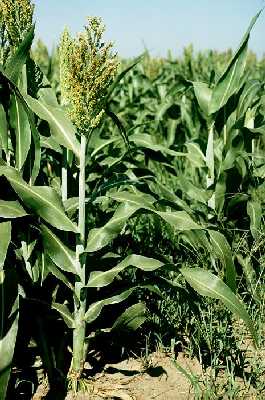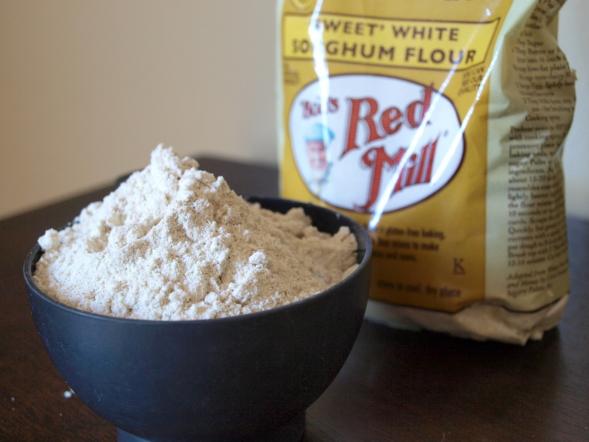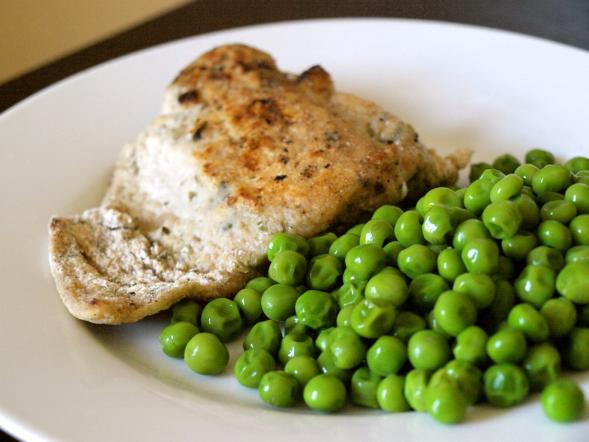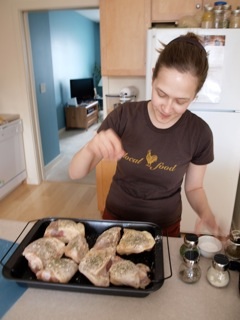This is the thirteenth post in the series Great Grains, highlighting unusual whole grains and easy ways to incorporate them into your diet. Check out posts on bulgur, millet, and quinoa as well.
One of the things I love most about whole grains is their versatility. In this series, I’ve tried flours, flakes, popped, dried, cracked, and pearled grains. I’ve tried whole grains; I’ve tried them both bleached and unbleached, I’ve made soups, breads, cookies, and every kind of porridge you can imagine. But it wasn’t until I found sorghum that I fully understood how one grain can have so much versatility, yet be so widely underutilized in American kitchens.
I mean, think about it. When is the last time a friend called you up and invited you over for their specialty — a home cooked dinner featuring sorghum? Not likely. Until writing this series I only knew what sorghum was from playing Farmville, definitely not because I’d eaten it.

Yet sorghum is one of the most popular grains grown on the planet. (Fifth most popular to be exact.) So what is it about sorghum that keeps it relatively unknown? Is it that the whole kernel form is difficult to find in large supermarkets? With the growing availability of gluten-free products some specialty stores and co-ops have added it to their shelves, but when I ask where it is I almost always get a crinkled up nose and a “Sorghum…are you sure we have that here?” from the clerk. Maybe this unfamiliarity is because most of the sorghum grown in the United States is fed to livestock or ethanol plants. Or maybe the unfamiliarity comes because sorghum can be found in many forms, so we don’t always even know that we’re eating it.
Regardless, sorghum deserves a second look from anyone interested in the whole grain lifestyle. It’s inexpensive, makes an easy substitution in many recipes, and is a nutritional powerhouse for gluten-free diets. Here’s what you need to know about the many faces of sorghum:
What is sorghum?
 Sorghum plantPerhaps one of the reasons
sorghum goes by unnoticed is because it goes by several different names.
Sorghum raised for food consumption comes from a common plant Sorghum
bicolor. But it’s also known as milo
and guinea corn or as jowar in India. It’s a tall plant with tops that bunch
out with the tiny sorghum grains. The United States is the largest producer of
sorghum, grown mostly in Kansas, Oklahoma, and Texas.
Sorghum plantPerhaps one of the reasons
sorghum goes by unnoticed is because it goes by several different names.
Sorghum raised for food consumption comes from a common plant Sorghum
bicolor. But it’s also known as milo
and guinea corn or as jowar in India. It’s a tall plant with tops that bunch
out with the tiny sorghum grains. The United States is the largest producer of
sorghum, grown mostly in Kansas, Oklahoma, and Texas.
Sorghum is sold in three main forms – as the whole grain, flour, and syrup. Sorghum flour is often sold as an “all-purpose gluten free” flour; it’s also often the primary ingredient in gluten-free baking mixes. Just be sure that the sorghum flour you find is whole grain and not processed. The best way to know is to look for the Whole Grain Council’s stamp on the package. Sorghum syrup’s deep caramel color and nutty sweetness has made it popular as an all-natural alternative to sugar. Although I’m pretty sure it doesn’t count towards the recommended 3 to 5 servings of whole grains we should eat every day!
What’s great about it?
As mentioned above, sorghum has been a primary driver of the gluten-free movement. It’s affordable, easy to grow in warm climates, and takes relatively little energy to process. Sorghum is one of the few whole grains that is completely edible in its original form, no hulling needed. Because it is lesser known in American diets, fewer studies have been conducted on the health benefits of diets high in sorghum. However, some findings show cholesterol lowering benefits and antioxidant counts high enough to reduce cancer and cardiovascular risk.
 Sorghum flour
Sorghum flour
What do I do with it?
The best way to get acquainted with sorghum is to start by replacing wheat flour with sorghum flour in your favorite recipes. Sorghum became so popular with gluten-free eaters because its light color, mild flavor, and silkier less-dense texture doesn’t alter baked goods as much as other flour substitutes. It’s important to note, though, that because sorghum has no gluten, a separate binding agent like xanthan gum or cornstarch should be added to baked goods to achieve the same results.
 Sorghum crusted salmon
Sorghum crusted salmon
Ready to try sorghum? Here are a few recipes for some sorghum inspiration:
· Sorghum-crusted fish – Combine 1 cup of sorghum flour with 3 tablespoons of cornstarch and favorite seasonings. Dredge fish in milk followed by flour mixture. Fry until golden brown. Also works well with chicken or pork.
· The Baked Brownie, Gluten Free from Simple, Good, and Tasty’s Kristin J. Boldon – A gooey, gluten-free chocolate brownie made with 1 ¼ cup sorghum flour and lots of dark chocolate.
· Sorghum Pierogi – There’s nothing more frustrating for those who can’t tolerate gluten than to miss out on traditional foods like pierogi. Using sorghum flour in the dough in place of all-purpose white flour takes out the gluten without losing same delicate texture and taste.
· Milo Cucumber Salad – Combine 3 cups of cooked sorghum grains with chopped fresh cucumbers, parsley, tomatoes, and fresh herbs (cilantro, parsley, and oregano are best). Stir in lemon juice and crumbled feta cheese before chilling 1-2 hours.
 Pizza with sorghum crust
Pizza with sorghum crust
· Sorghum Pizza Crust – Many people who substitute sorghum flour in their pizza dough actually prefer it over other gluten-free flours. Sorghum flour’s flavor and texture are similar to wheat flour, which lets favorite toppings be the star instead of a gummy, bland crust.
· Sorghum Beer – Although there’s no recipe here (or promises for any whole grain nutrition benefits), try New Grist made by Lake Front Brewery in Milwaukee, WI. Made without wheat or barley, the beer uses sorghum extracts for an entirely gluten-free pilsner-style beer.
Photo of sorghum plant from Robert W. Freckmann Herbarium

Amy Sippl is a frequent contributor to Simple, Good, and Tasty. She grew up in rural Wisconsin, but now calls St. Paul her home. She writes about her successes and struggles to eat and grow local food on her blog: Minnesota Locavore. She writes the Great Grains series for SGT; her last non-grain post for us was Co-op on a Budget: Your DIY Headquarters.

